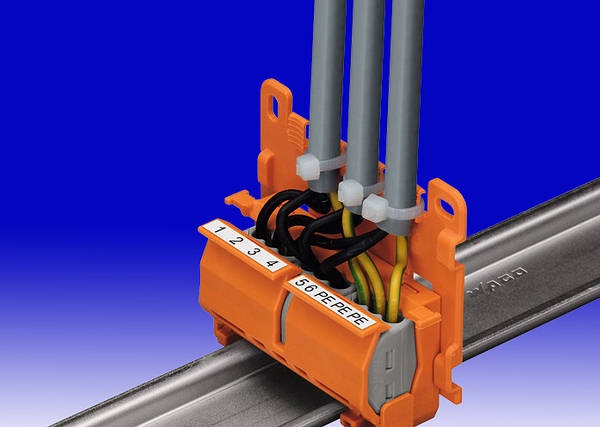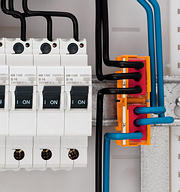Dutch of the Elm:
I guess the spring-loaded grip on the conductor is what gave me the impression that they should only be a temporary fix - have I misunderstood then, and are they okay for permanent work?
I keep a few of the older style ones with my tester for R1+R2 and ring tests.
My understanding is that all Wagos are maintenance free (in a suitable enclosure), but for T&E the 773 series are cheaper. Clearly the push in types are not suitable for fine-stranded. A lazy twist seems to be the right thing to do.
From their site:
All our electrical interconnection solutions are distinguished by:


Chris Pearson:Dutch of the Elm:
I guess the spring-loaded grip on the conductor is what gave me the impression that they should only be a temporary fix - have I misunderstood then, and are they okay for permanent work?I keep a few of the older style ones with my tester for R1+R2 and ring tests.
My understanding is that all Wagos are maintenance free (in a suitable enclosure), but for T&E the 773 series are cheaper. Clearly the push in types are not suitable for fine-stranded. A lazy twist seems to be the right thing to do.
From their site:All our electrical interconnection solutions are distinguished by:
- ...
- Maintenance-free
- ...
Chris Pearson
would you twist the stranded aswell? I remember a while back the debate about meter tails in a cage clamp terminal of a consumer unit main switch for example. The consensus was to keep the strands straight for a better termination. I think that the smaller conductors, say 1.5mm suffer less from strands rearranging than the larger but would be interested to hear other opinions
Baldyhugh:
would you twist the stranded aswell? I remember a while back the debate about meter tails in a cage clamp terminal of a consumer unit main switch for example. The consensus was to keep the strands straight for a better termination. I think that the smaller conductors, say 1.5mm suffer less from strands rearranging than the larger but would be interested to hear other opinions
No, only fine stranded. So 1.5 mm² (and upwards) singles go straight in. I have a lovely Facom stripper (and don't understand how it doesn't damage the strands), but if using a penknife, I would twist the sheath as I pull it off. I don't think that it matters whether we are talking about Wagos, choc-blocks, plug, or any other type of terminal, fine stranded gets a lazy twist.
As for stranded, they are made with a twist in any event.

We're about to take you to the IET registration website. Don't worry though, you'll be sent straight back to the community after completing the registration.
Continue to the IET registration site